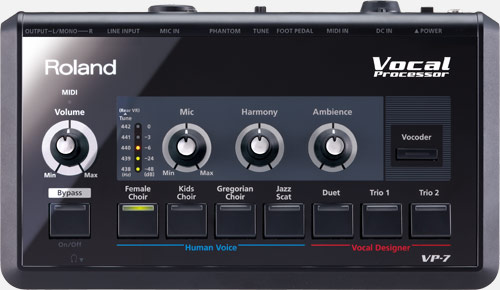On phase, that is definitely not unusual to see guitarists, and even bassists using floor-based effects pedals in order to manipulate their sound to match their instrumental performance with what they listen to in their heads. Wah-wah pedals, distortion pedals, and even complicated effects processors which allow for digital music looping and preprogrammed effects are typical fairly common in a guitar world.
Nevertheless, what is obviously unusual is to see a singer using the same type of equipment to enhance their vocal performance. While in the studio, really for singers to use a variety of music equipment in order to boost their vocal paths, this does not often translate to the stage, especially not by using a method that the singer can control in real time.
Many different studio effects can be replicated with vocal floor processors. This type of equipment is meant to lie toned on the stage floor, like a guitar processor chip, and allow the vocalist to use their feet to alter the types of vocal effects that can be applied. There are many outcomes available in these devices which can help a singer re-create the same processor 2018 performance that was captured in a studio recording. Multi-voice harmony may take a singer's voice and then digitally clone it in order to instantly create several harmony parts in tune with the current vocal. It may also allow a second singer to add multiple harmony parts to the lead singer's performance employing their voice instead. Double-tracking, where a singer includes several different takes of a vocal track into a layered version of the lead vocal, can be accomplished with this type of processor. This can add a richer, larger sound to the singer's voice, allowing him or her to lessen their own volume level and preserve their expressive cords for repeat activities.

Of course, it's not simply vocal-specific effects that are secured up inside these kinds of devices. The standard effects accessible to guitarists or other musicians can be utilized by singers. Reverb and delay are a pair of the most popular classic effects as it pertains to performing, and both can be employed in order to improve the drama or poignancy of any vocal track. Regarding singers who are thinking about exploring the more extreme side of effects processing, distortions and phaser effects can transform your voice into something almost distorted. A special foot-pedal allows vocalists to roll outcomes on and off in order to organically blend them into the overall sound they are trying to achieve.
Some vocalists do not feel comfortable controlling this type of kit during a show, and they prefer to leave their vocal processing in the hands of the sound engineers who are mixing the concert. For higher-budget productions who can afford personnel to track dedicated sound cues, rack-mounted versions of vocal processing equipment are in the same way useful for getting the most out there of a singer's tone of voice. Rack mount equipment is a little more fragile than floor processors, but it also usually has more options and more power jam-packed inside its casing.
